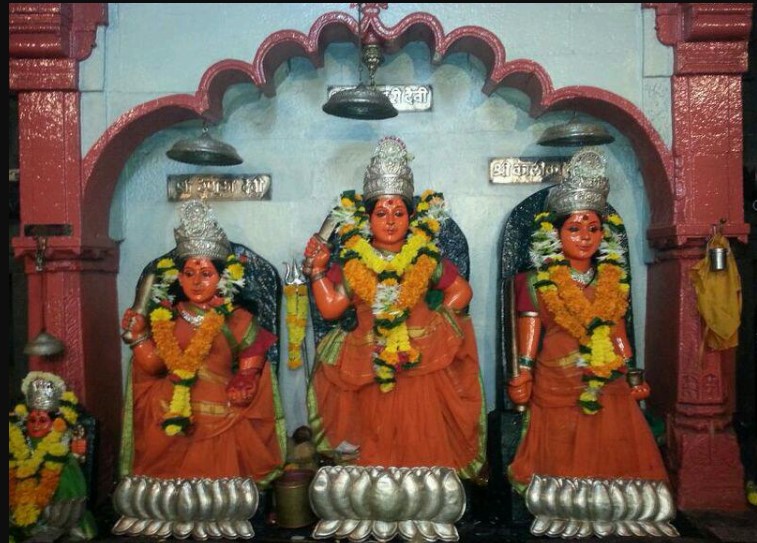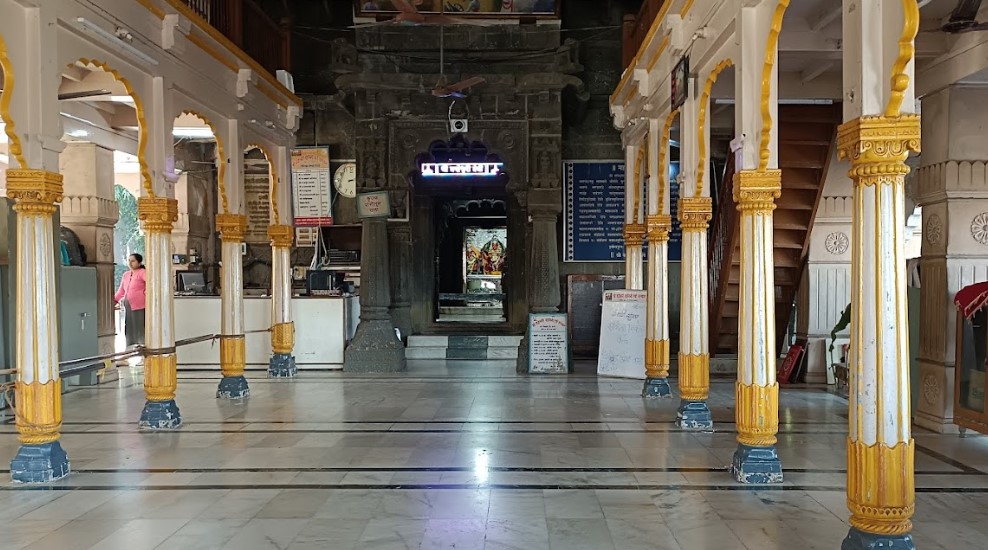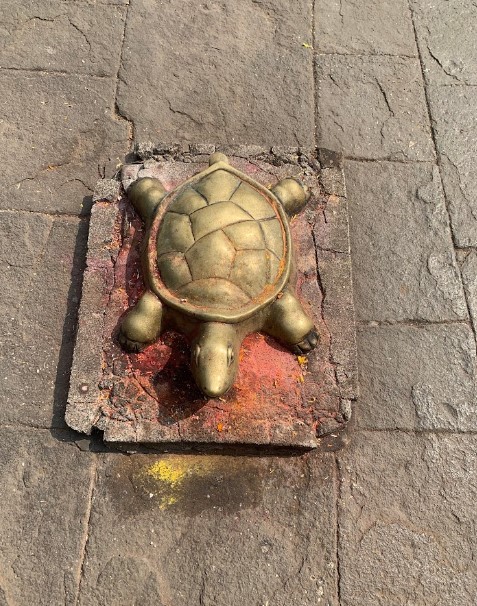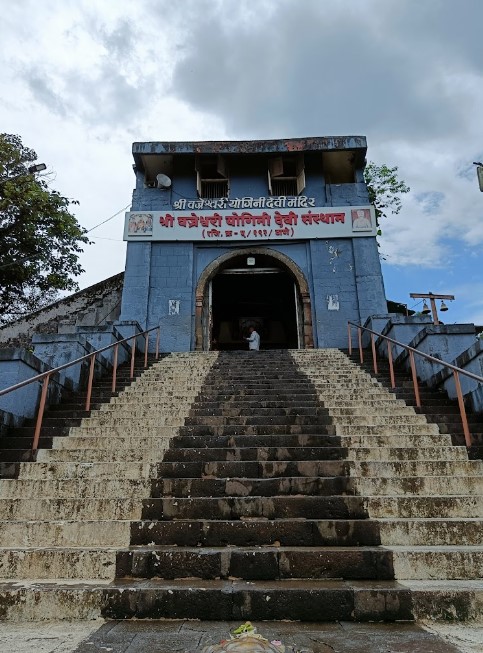The Vajreshwari Temple is situated in Bhiwandi City, in the Thane district, some 75 km from Mumbai, on the banks of the Thansa River.
The town, which was formerly called Vadvali, was renamed Vajreshwari in honour of the temple’s presiding god.

The Puranas (Hindu scriptures) cite Rama and Parshurama as visiting the region of Vadvali as Avatars (incarnations) of Vishnu (the Hindu god of preservation).
According to mythology, Parshurama had performed a yajna in Vadvali, and its leftovers are the volcanic ash hills in the region.
Vajreshwari, often referred to as Vajrábái and Vajrayogini, is said to be the earthly manifestation of the goddess Parvati or Aadi-Maya.
The literal translation of her name is “the lady of the Vajra (thunderbolt)”.
Legend of Vajreshwari Temple Bhiwandi city
There are two legends about the goddess’ origins. Both the legend is associated with the Vajra.
Legend 1 :
A Rakshasa (demon) by the name of Kalikala or Kalikut tormented the rishis (sages) and people in the Vadvali region 1000 years ago and engaged in battle with the devas (gods). In order to appease the Goddess, the gods and sages under Vashishta’s leadership performed the Trichandi yagna, or fire offering.
Indra, the ruler of the gods, was not given an aahuti, or ghee offering at a yajna. Indra became furious and threw his Vajra—one of the strongest weapons in Hindu mythology—at the yajna.

The gods and sages begged the Goddess to help them because they were scared. In addition to swallowing the Vajra and bringing Indra low, the Goddess manifested at the scene in all her splendour and slew the demons.
Rama asked the Goddess to remain in the Vadvali region and take the name Vajreshwari. As a result, the Vajreshwari temple was built here.
Legend 2:
According to another myth, Indra and other devas went to the goddess Parvati and begged her for assistance in defeating the demon Kalikala.
Goddess Parvati gave them the assurance that she would help them when they needed it and gave the order to battle the demon.
Kalikala swallowed or broke every weapon that was thrown at him throughout the conflict. Last but not least, Indra flung the Vajra at the demon, which Kalikala shattered into pieces and from which the Goddess emerged and slew the demon.
Devas praised her as Vajreshwari and constructed her shrine in her honour.
In 1739, Peshwa Baji Rao I’s younger brother and military leader, Chimaji Appa, established a camp in the Vadvali district on his route to seize the Portuguese-held Bassein Fort of Vasai.
Chimaji Appa appealed to the Goddess Vajreshwari that if he could conquer the fort and vanquish the Portuguese, he would erect a temple to the goddess.
That night, Goddess Vajreshwari appeared in the Chimaji Appa’s dreams and told him he could conquer the fort. The fort collapsed as a result of the Goddess’s words, and the Portuguese were defeated in Vasai.

To commemorate his victory and to satisfy his vow made in front of Goddess Shri Vajreshwari, Chimnaji appa directed that the Vajreshwari temple be built by the new Subhedar (governor), Shankar Keshav Phadke.
The saffron idol of Goddess Vajreshwari holds a sword in her right hand and a mace in her left. To the left of goddess Vajreshwari are the idols of goddess Renuka (Parshurama’s mother) holding a sword and a lotus, goddess Saptashrungi Mahalakshmi of Vani, and a tiger, goddess Vajreshwari’s vahana or steed.
On her right are the murtis of goddess Kalika (the village goddess) holding a lotus and a kamandalam (water pitcher) and Parshurama wielding an axe.
The goddesses wear silver jewels and crowns, stand on silver lotuses, and are shaded by silver umbrellas.
You may also like: Amba Devi Temple, Amaravati, Maharashtra

